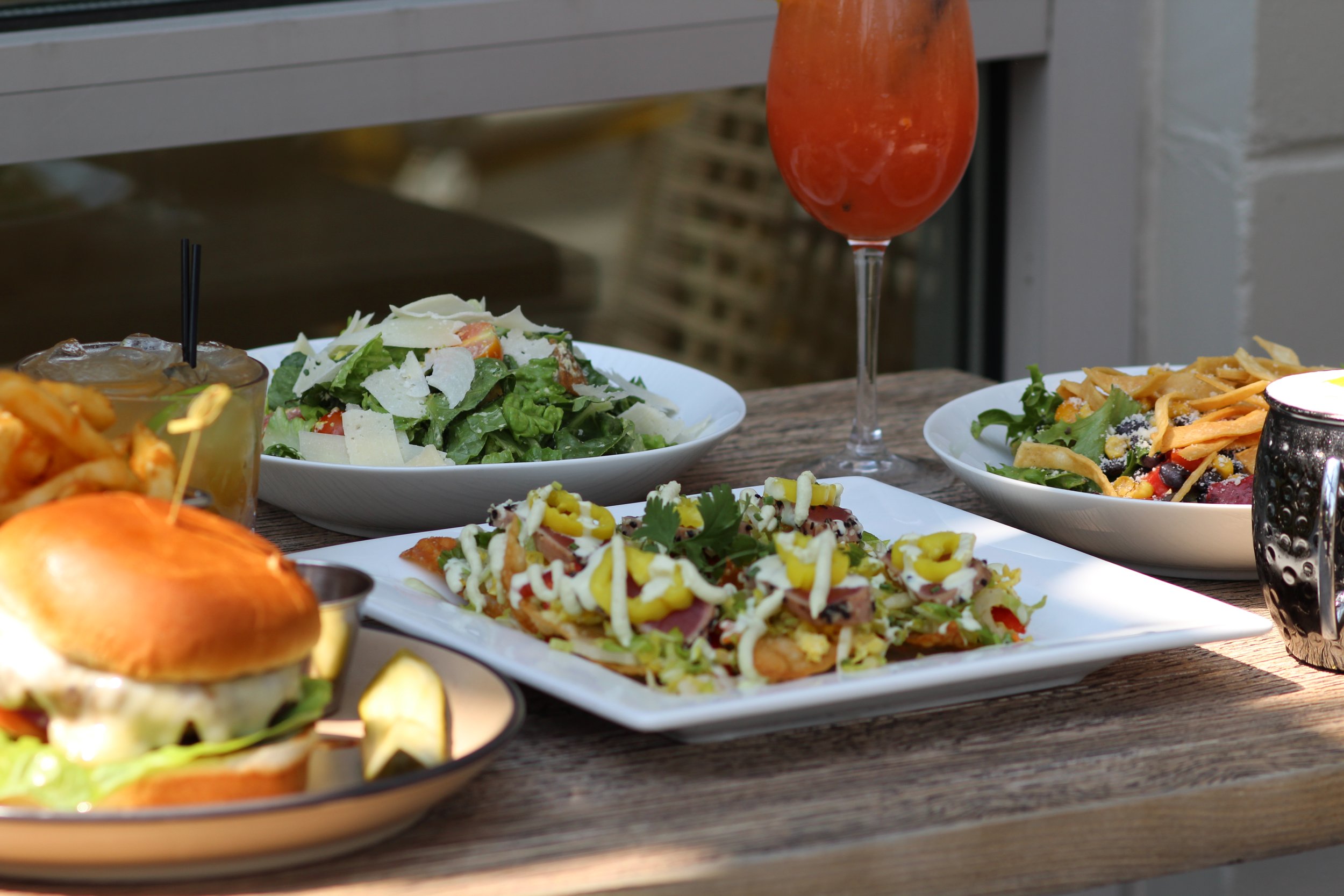Chinese Food Islamabad: Take Pleasure In Genuine Chinese Cuisine at its Best
Chinese Food Islamabad: Take Pleasure In Genuine Chinese Cuisine at its Best
Blog Article
Savor Authentic Asian Food With a Pan-Asian Spin for a Culinary Journey
Embarking on a cooking trip through genuine Eastern cuisine, improved with a Pan-Asian spin, offers a special chance to check out the abundant tapestry of tastes that specify the area's varied culinary practices. As you ponder these attracting recipes, consider the cultural stories and historic influences that form them, each bite offering a story waiting to be uncovered. Instagrammable restaurants Islamabad.

Exploring Pan-Asian Tastes
In the realm of international gastronomy, Pan-Asian food sticks out for its exceptional variety and the unified interplay of tastes from different Eastern cultures. This culinary approach commemorates the distinct ingredients and abundant practices located across the continent, developing a tapestry of tastes that is both satisfying and appealing. Key to Pan-Asian food is its capability to balance contrasting tastes-- wonderful, salted, spicy, and sour-- while highlighting the freshness and high quality of each ingredient.
From the umami-rich soy sauce of Japan to the intense chili peppers of Thailand, Pan-Asian cuisine offers a considerable combination of tastes. These components are often combined in inventive methods, enhancing meals with layers of intricacy. For example, the use of fragrant herbs such as lemongrass and cilantro, typical in Vietnamese and Thai food, includes a revitalizing brightness to meals, while the unification of coconut milk delivers a velvety, abundant texture.
The emphasis on fresh produce and aromatic seasonings guarantees that each meal is not just a banquet for the taste yet likewise for the senses. Pan-Asian cuisine invites diners to begin on a cooking trip, checking out the substantial and differed landscapes of Asian gastronomy with every bite.
Fusion Meals to Attempt
While Pan-Asian food is celebrated for its typical flavors, the modern cooking landscape is progressively embracing fusion recipes that mix these traditional components with influences from various other areas. This innovative technique not just honors the abundant heritage of Oriental cooking arts however likewise introduces unique taste experiences that interest modern tastes buds.
An archetype of such a combination dish is the Korean-Mexican taco, where seasoned bulgogi beef is covered in a warm tortilla, covered with kimchi and a spicy gochujang-infused salsa. This mix weds the bold, full-flavored flavors of Korea with the vivid, fresh components of Mexican cuisine. In a similar way, sushi burritos have obtained popularity, amalgamating the fragile artistry of Japanese sushi with the hearty, hand-held comfort of a burrito, frequently including fusion active ingredients like tempura shrimp and avocado with a drizzle of wasabi mayo.
Another noteworthy recipe is Thai curry ramen, which infuses the velvety, fragrant seasonings of Thai curry right into the calming broth of standard Japanese ramen, creating an unified mix that tantalizes the senses. These combination dishes prolong past mere novelty; they stand for a culinary dialogue between societies, motivating expedition and development on the planet of Pan-Asian food.
Important Active Ingredients and Spices
To genuinely value Pan-Asian food, one need to understand the vital active ingredients and spices that create its foundation. This diverse culinary style draws from a rich tapestry of Oriental customs, utilizing an unified blend of tastes and appearances. Trick components include soy sauce, fish sauce, and oyster sauce, which pass on a full-flavored umami deepness important to Oriental meals. Complementary to these are rice vinegar and mirin, providing a delicate level of acidity and sweetness.
Fragrant components are essential, with ginger, garlic, and lemongrass being common throughout different Pan-Asian recipes. These ingredients offer an aromatic base that boosts the intricacy of tastes. Spices such as celebrity anise, cardamom, and cinnamon present heat and character, resembling impacts from areas like China and India.

Cooking Methods and Tips
Understanding the art of Pan-Asian cuisine requires experience with its unique food preparation techniques, each adding to the vibrant tapestry of flavors this cooking practice is celebrated for. Central to these approaches is the stir-fry, a rapid cooking method that maintains the nutritional honesty and dazzling colors of components. Using a wok, the stir-fry technique enables also warmth distribution, crucial for achieving the characteristic structure and taste equilibrium of Pan-Asian dishes.
An additional essential technique is steaming, particularly widespread in Chinese cuisine. This mild approach maintains the natural flavors and nutrients of ingredients, making it excellent for seafood and vegetables. Dumplings, a cherished staple, commonly gain from steaming, resulting in soft, succulent structures.
Grilling, also essential, gives great smoky midsts to recipes such as Oriental bulgogi or Japanese yakitori (Instagrammable restaurants Islamabad). This technique often entails seasoning components, permitting tastes to permeate deeply before cooking over an open fire or warm plate
Last but not least, understanding the art of stabilizing flavors-- sweet, sour, salty, bitter, and umami-- is essential. Properly layering these components can raise a recipe from average to amazing, providing a complex and pleasing cooking experience that symbolizes the essence of Pan-Asian food.
Dining Experiences Worldwide
Across the globe, Pan-Asian food uses an unequaled dining experience, celebrated for its rich tapestry of tastes and dynamic discussions. This click reference culinary phenomenon has actually transcended social limits, capturing the hearts and palates of food fanatics worldwide. In multicultural cities fresh York, London, and Sydney, Pan-Asian restaurants work as fusions where cooking customs from Thailand, Japan, China, and past assemble, offering restaurants with an eclectic mix of recipes that highlight the region's variety.
The worldwide charm of Pan-Asian cuisine hinges on its capacity to offer both authenticity and advancement. Cooks skillfully marry standard active ingredients such as lemongrass, soy sauce, and miso with modern strategies, resulting in dishes that are both familiar and refreshingly new. This combination enables diners to begin on a cooking journey that respects heritage while embracing modernity.
Furthermore, click reference dining experiences are raised via attentively designed environments that reflect the values of Pan-Asian appearances. From minimalist Japanese-inspired insides to dynamic Thai-themed areas, each restaurant provides a special atmosphere that complements the culinary offerings. Because of this, patrons are not merely consuming a meal however partaking in a cultural experience, making Pan-Asian dining a truly international phenomenon.
Conclusion
The exploration of Pan-Asian food uses a profound understanding of the complex interaction of flavors and culinary practices throughout Asia. By accepting fusion dishes such as Thai curry ramen and sushi burritos, the cooking journey not just highlights the adaptability of standard ingredients however also showcases cutting-edge modern methods. This gastronomic experience, enriched by necessary seasonings and cooking techniques, supplies a distinct opportunity go to website to appreciate the social diversity and cooking creativity that specify Pan-Asian food on a worldwide range.
Beginning on a culinary trip with authentic Oriental cuisine, improved with a Pan-Asian twist, supplies a special opportunity to check out the abundant tapestry of flavors that specify the region's varied culinary practices.In the world of global gastronomy, Pan-Asian food stands out for its remarkable variety and the unified interplay of tastes from various Eastern cultures. Key to Pan-Asian food is its ability to stabilize different flavors-- wonderful, salty, spicy, and sour-- while highlighting the freshness and top quality of each ingredient.

Report this page